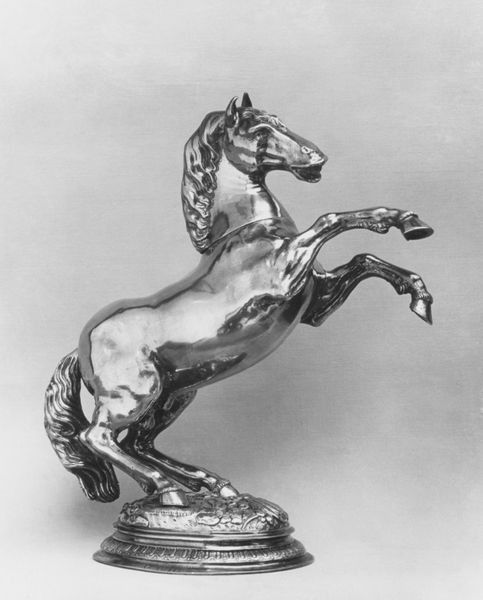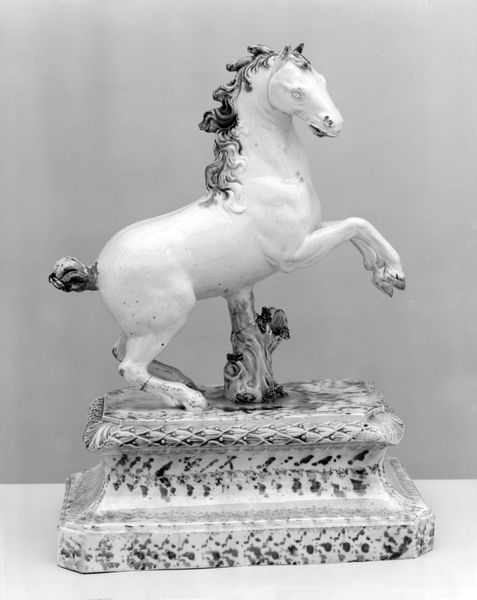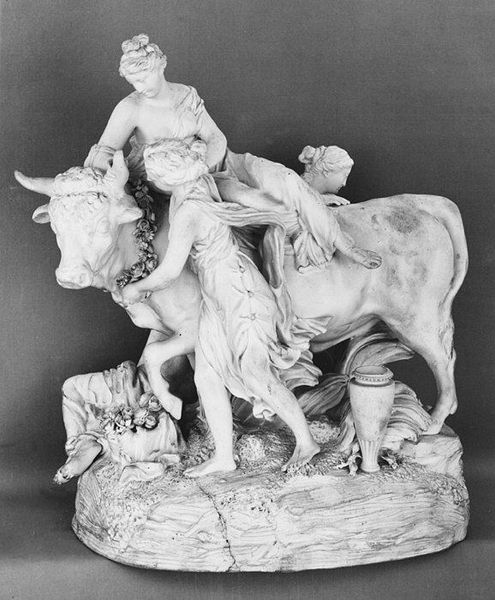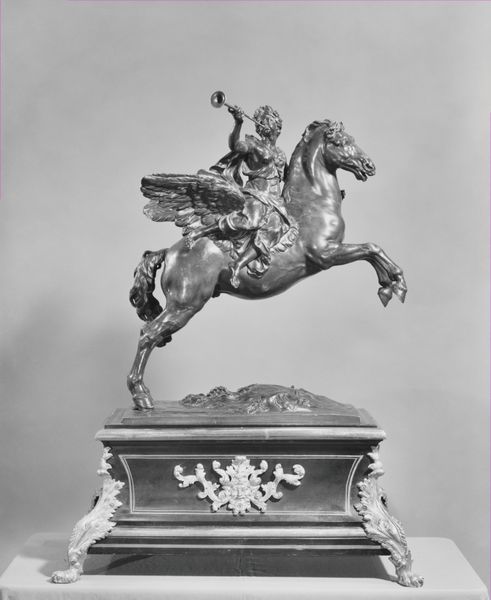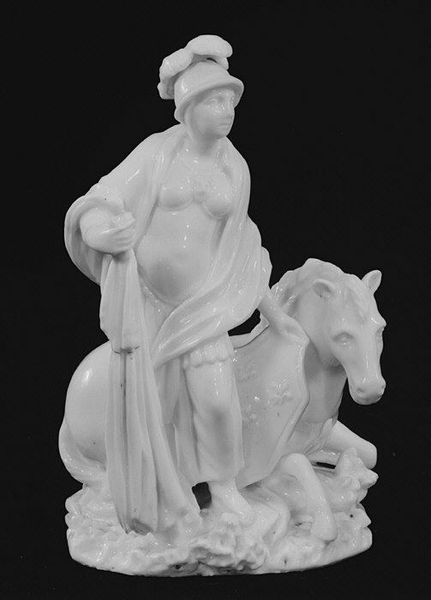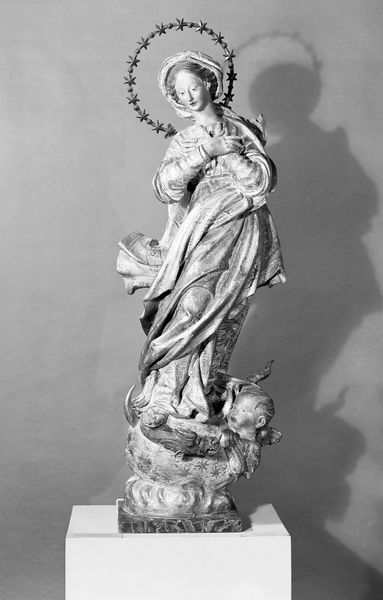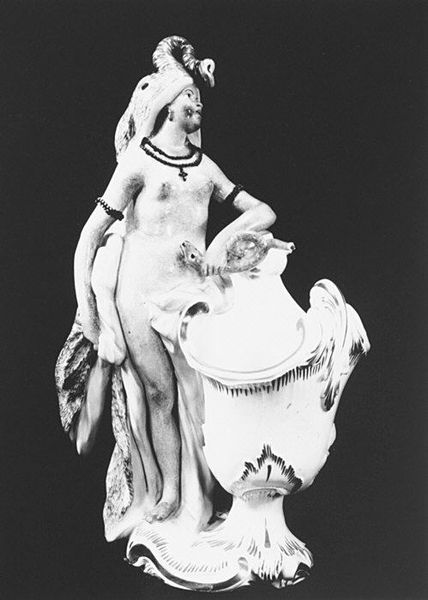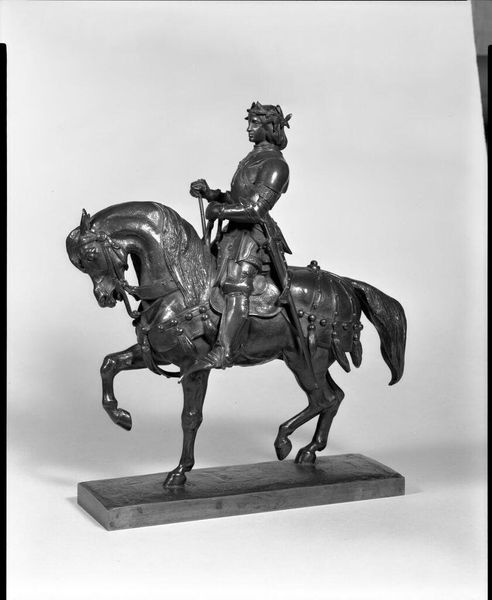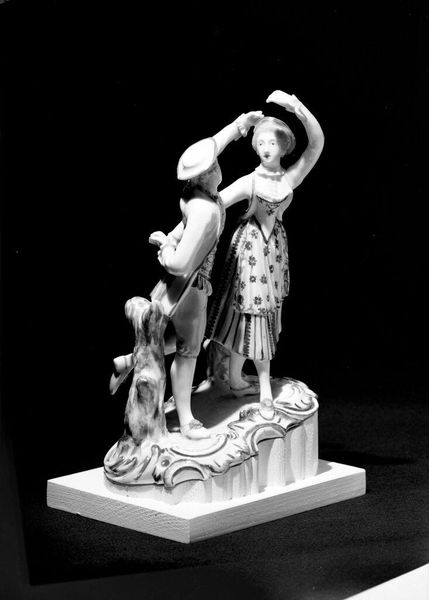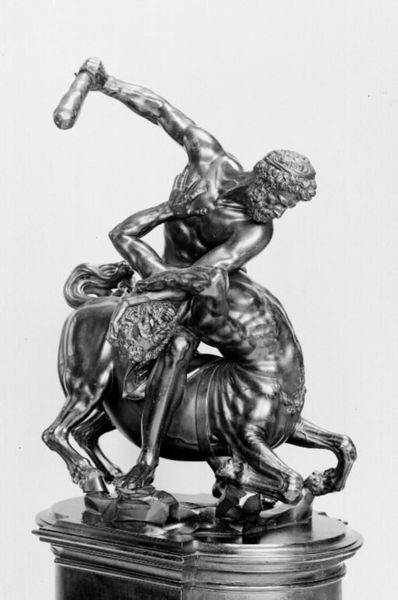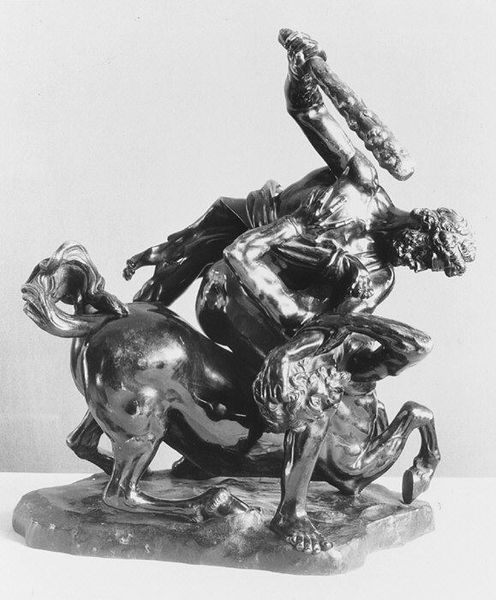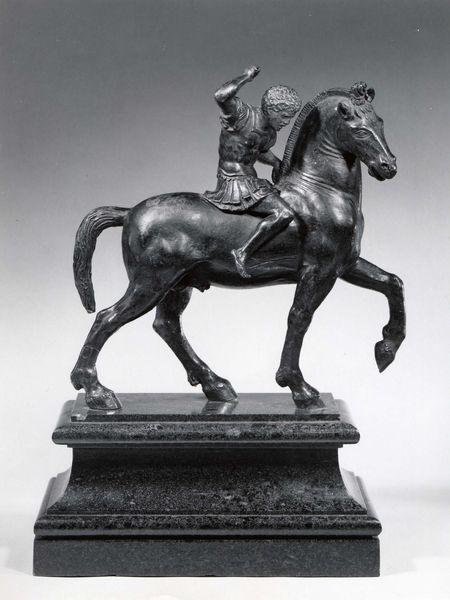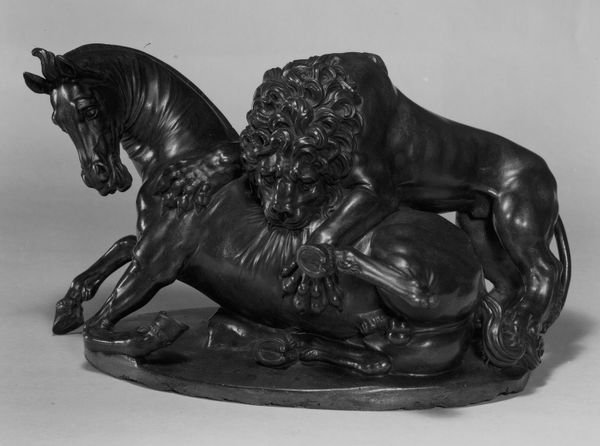
Tartar horseman attacked by a lion 1760 - 1775
0:00
0:00
Dimensions: Height: 9 1/2 in. (24.1 cm)
Copyright: Public Domain
This porcelain sculpture of a Tartar horseman attacked by a lion, was produced at the Nymphenburg Porcelain Manufactory, established in 1747. Porcelain, also known as “white gold,” was a luxury material, prized for its smooth, translucent quality. The figure was likely made using a mold-casting process, requiring skilled artisans to meticulously shape and assemble the various components. The smooth, even surface of the porcelain allowed for delicate details, such as the horseman's facial features and the lion's fur. The production of such a complex figure involved a division of labor, from the initial design to the final firing and glazing. Such porcelain sculptures were luxury items, intended for display in the homes of the wealthy. They embody the culture of collecting and consumption that defined the 18th century. Appreciating the incredible amount of labor that went into it allows us to see beyond the object itself, and think about the social and economic context in which it was created.
Comments
No comments
Be the first to comment and join the conversation on the ultimate creative platform.
